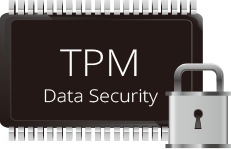What is Trusted Platform Module
Trusted Platform Module or TPM is a specialized and dedicated chip which stores cryptographic keys. It acts as endpoint security for the devices which support it. When someone owns a device, it generates two keys — These keys can only be accessed on the hardware level. No software program can access those keys. Apart from these keys, there is another key called as Attestation Identity Key or AIK. It protects the hardware from unauthorized firmware and software modification.
How to check if you have TPM chip
There are multiples ways to check TPM chip availability. However, you should know that it should be enabled at the hardware level so that security software security like Bitllocker can use it.
1] Open Trusted Management Module Management
Type tpm.msc in the Run prompt, and hit enter. It will launch the Trusted Management Module Management. If it says: or anything similar, then you do not TPM on the computer.
If it says: You have it! You can use TPM Diagnostics Tool in Windows 11 to find out the Trusted Platform Module chip information of your system.
2] Check-in BIOS or UEFI
Restart the computer and boot into BIOS or UEFI. Locate the security section, and check if there is a setting similar to TPM Support or Security Chip or anything else. Enable it, and restart the computer after saving the settings. Read: TPM vs PTT: What are the main differences?
3] Check with Device Manager
Use Win+X+M to open the Device Manager. Find if there is a Security devices node. If yes expand it and TPM with module number.
4] Use WMIC in the Command Prompt
In an elevated command prompt, execute the command: It will display a list of key-value pairs. If you see True in the result, it means that TPM is enabled; else you will see No instances available. We hope the guide was straightforward and easy enough for you to figure out if the computer has TPM chipset. Read: How to bypass TPM requirement and install Windows 11?
